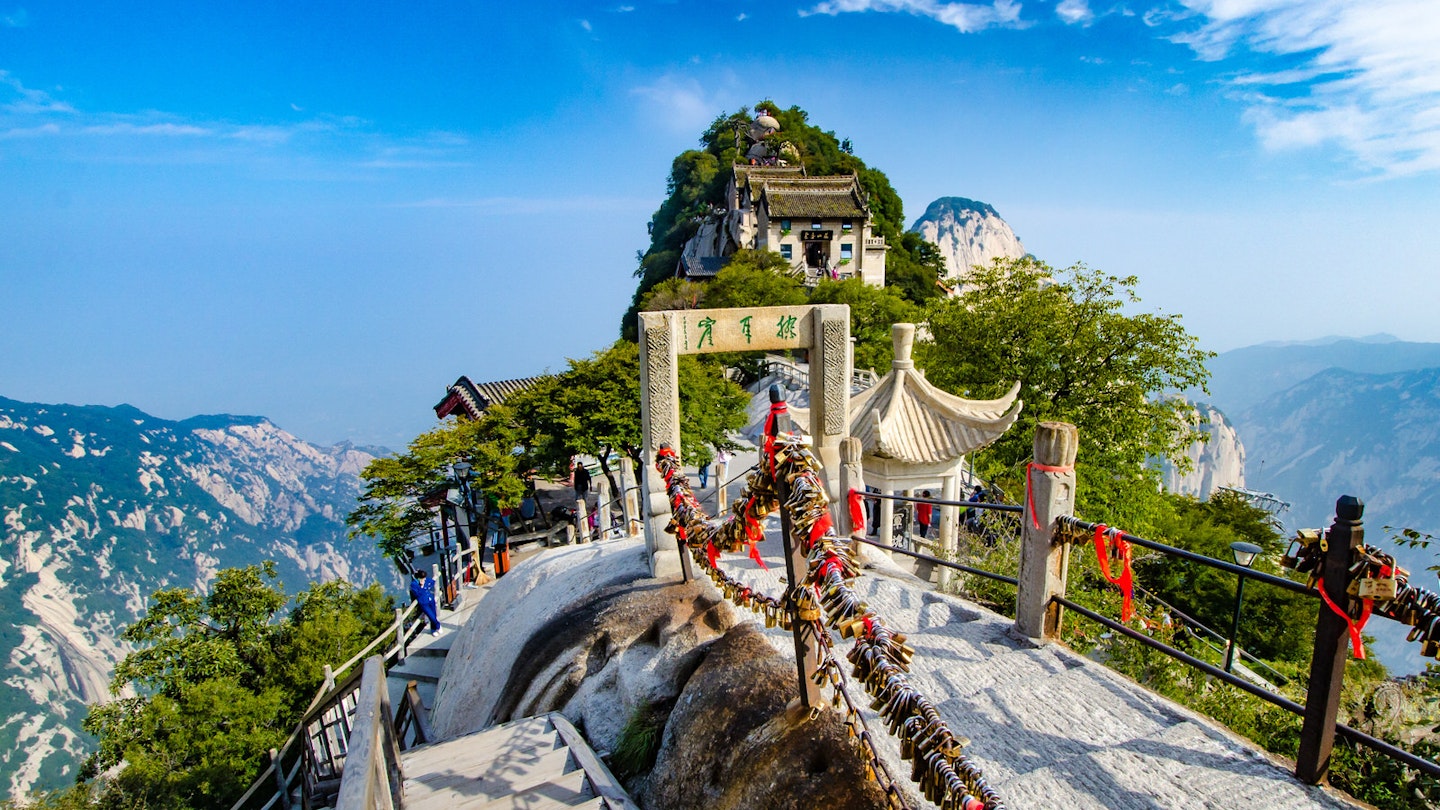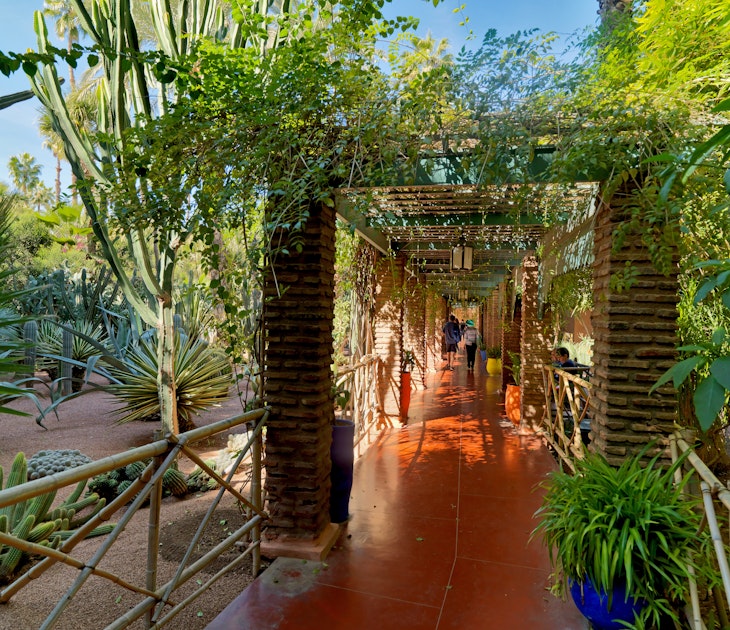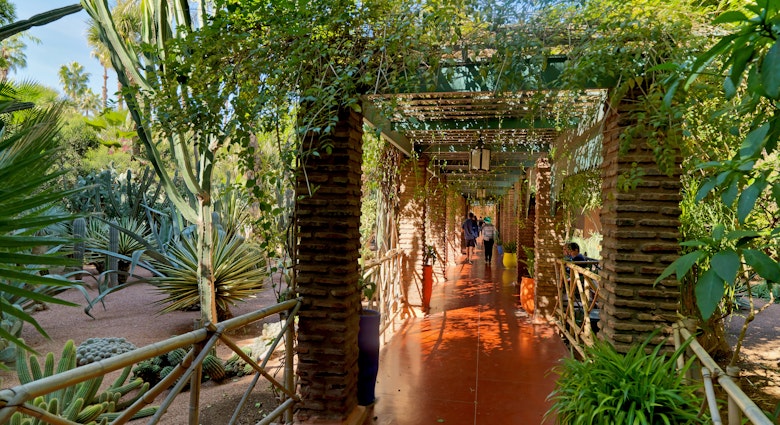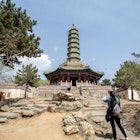A city of historic drum towers and roasting lamb skewers, historic Xi'an is often more evocative of Central Asia and the Silk Road than the Middle Kingdom. Yet just on the edge of the Wei Valley is a holy mountain whose Taoist temples and legendary precipices are centuries older than even the famous Terracotta Warrior Army.
Hua Shan's hiking routes and magnificent landscapes make for an excellent escape from Xi'an to explore the westernmost of China's 'five great mountains'.
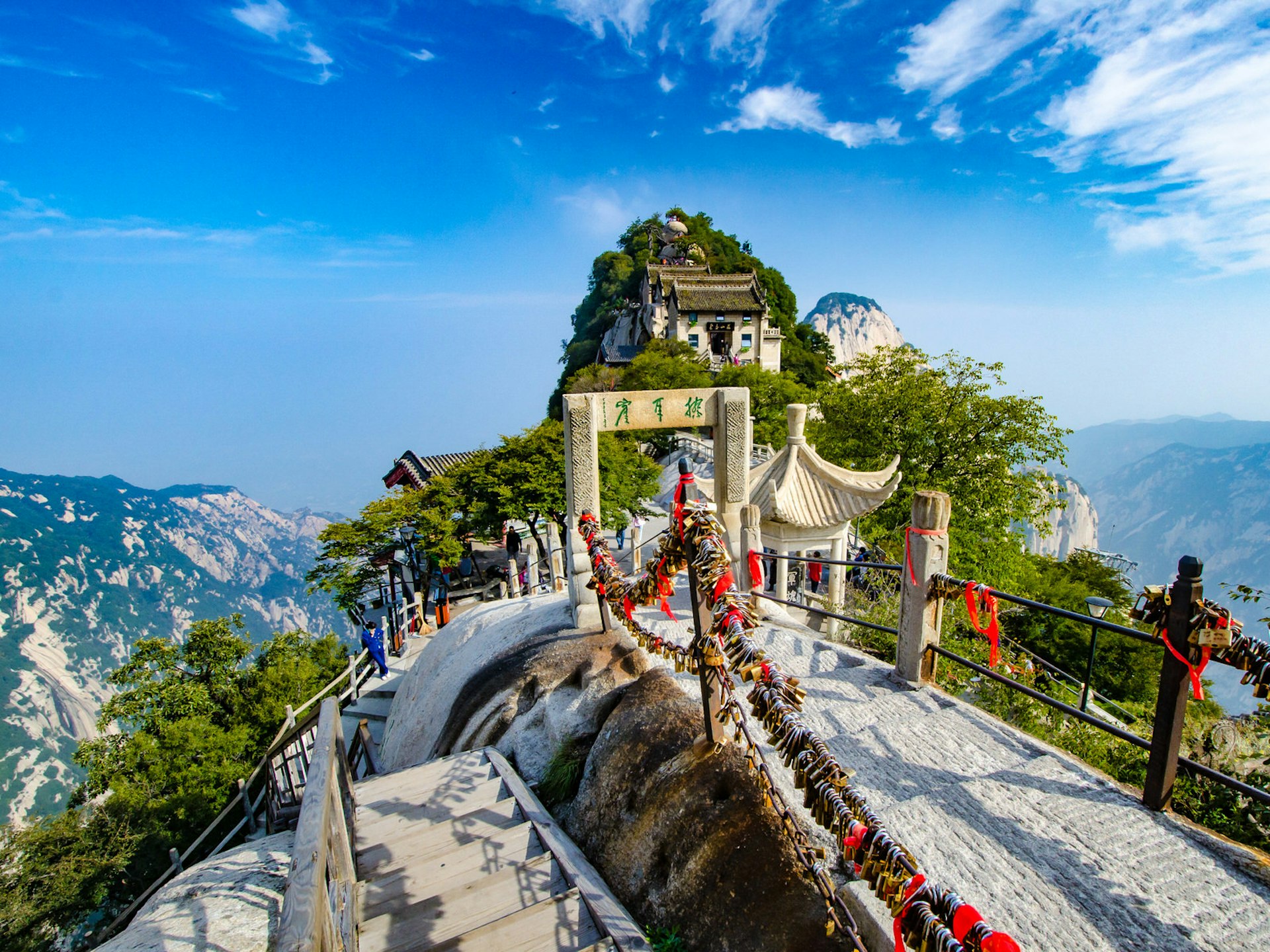
The traditional climb from Hua Shan's base runs along the 'Soldier's Path' – 1800m of vertical ascent over a seemingly endless staircase (it's actually 6km, or 4000 steps) – is mostly the stuff of shoestring backpackers and historic romantics these days, as mass tourists head for the two cable cars that make the long trip up. Soaring over these ancient forests offers a wonderful vantage for taking pictures, of course, but the two-hour hike along hand-carved stone stairs from base to summit is the only way to truly understand the hard work and devotion that pilgrims have put into this holy mountain over the centuries.
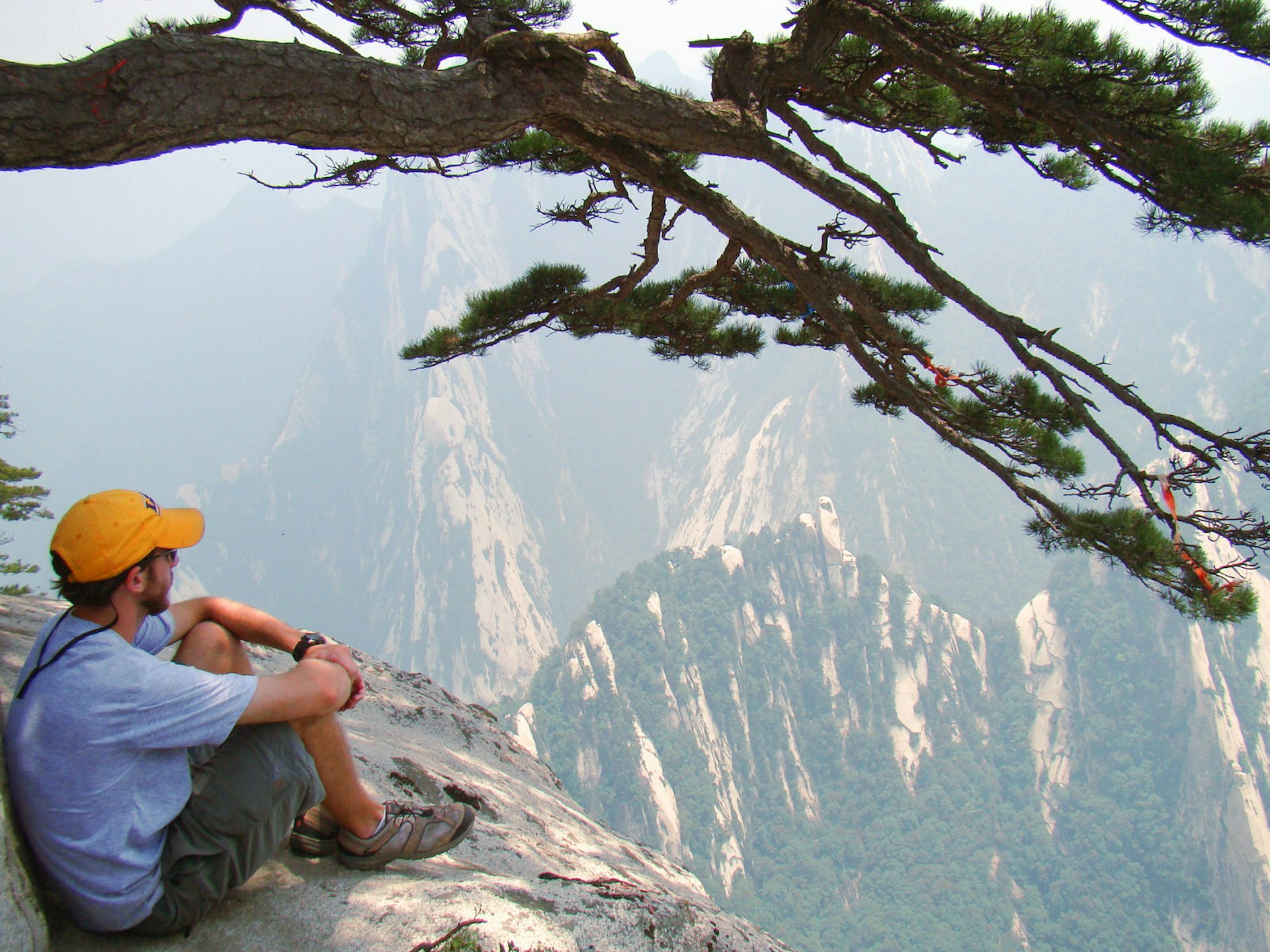
Climbing Hua Shan's four peaks
Revered foremost as a Taoist holy mountain, Hua Shan's four major peaks are capped with ancient temples that have been the site of prayer and sacrifice since at least the period of emperor Qin Shi Huang in the 200s BC. Today's visitors may arrive en masse wielding selfie sticks, but the experience of walking these precipitous paths remains much the same as it has for thousands of years. Whether on foot or whizzing in a cable car, most visitors travel from the valley floor to North Peak. From here, the lowest of the mountain's four high points, steps continue upwards over undulating ridges and past floridly titled scenic spots to East, South, and West peaks.
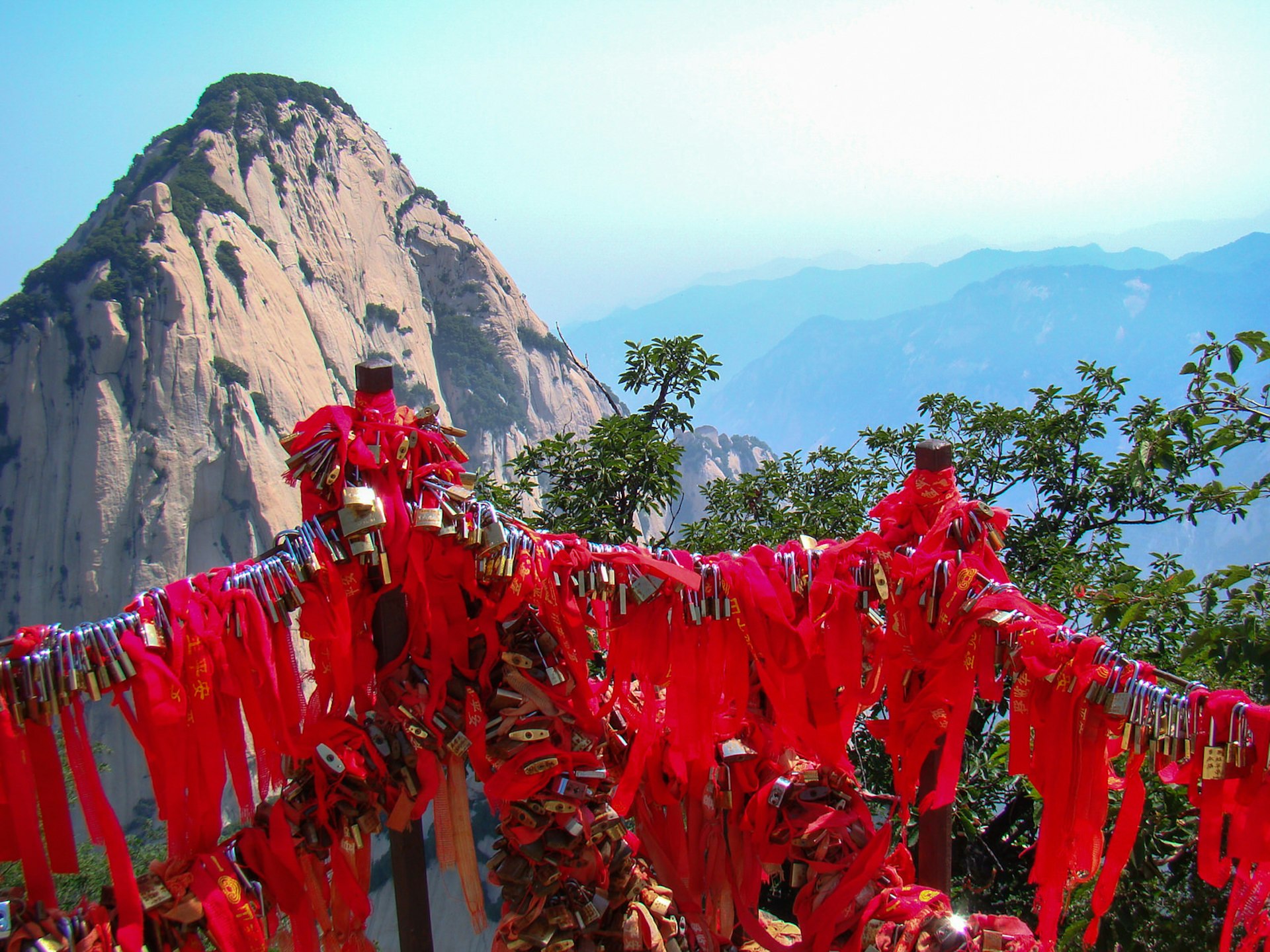
The highest of the four at 2154m, South Peak is renowned for the seemingly-endless panoramas at the top and the infamously-steep pathways that make up the final stretch of the ascent. More famous perhaps is East Peak, where the viewing platforms are the end goal for climbers who toil through the night to reach the top in time for sunrise and a day exploring the rest of the mountain.
In between the four major peaks are smaller ridges, historic inscriptions, small pavilions and unexpected viewpoints that reward those who stray off the main trails and explore the Hua Shan's quieter corners.
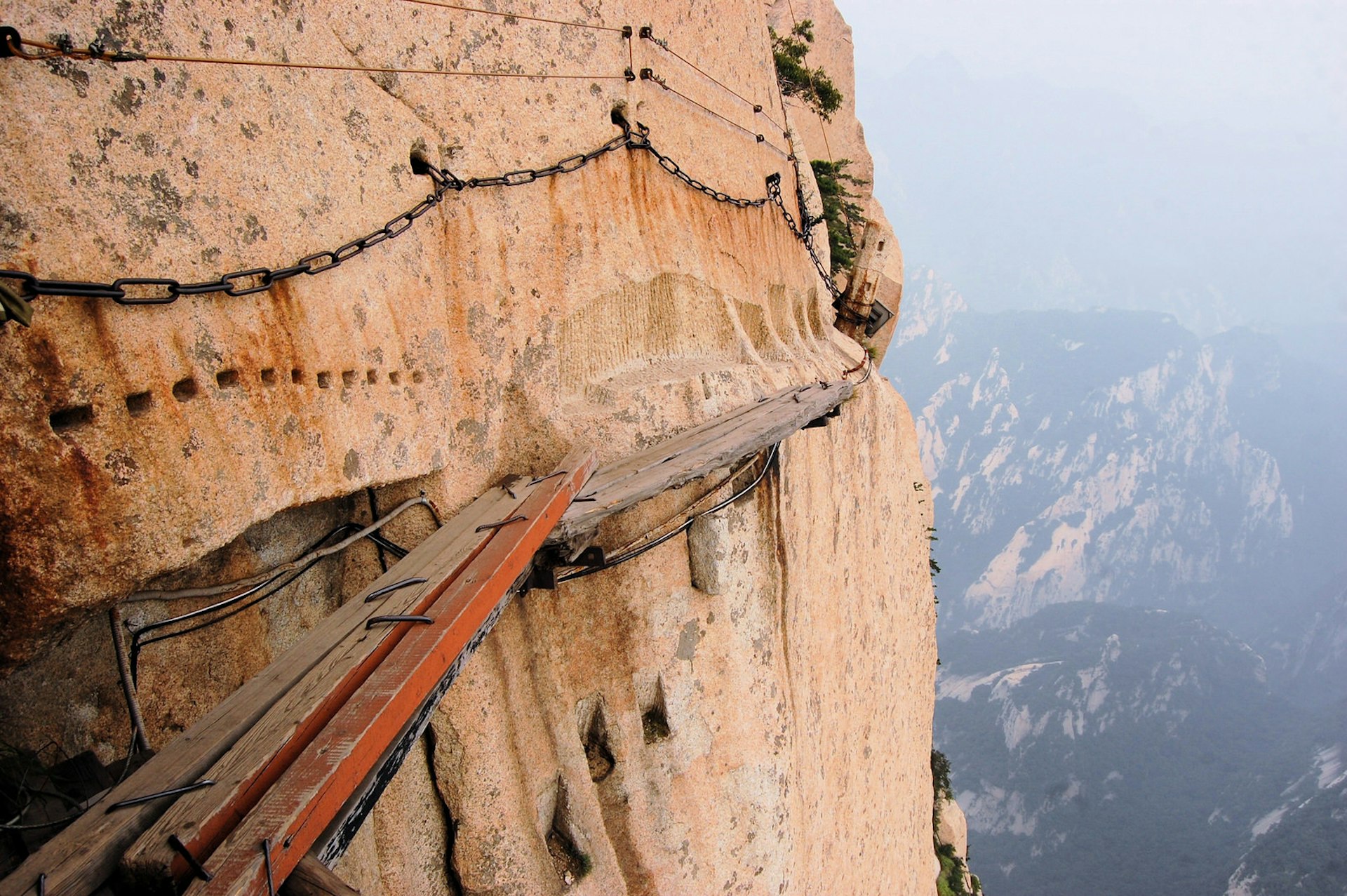
Most dangerous hike in the world
Within China, Hua Shan is known as the 'most precipitous mountain under heaven' because of its steep carved pathways and the long drops that often surround them. Internationally, Hua Shan many times been called the 'most dangerous hike in the world'. The most (in)famous path, the 'plank road in the sky', takes walkers out on rickety wooden beams supported only by steel posts drilled directly into the sheer cliff face below. Mandatory harnesses and a clip-in via ferrata make it all quite safe, but it isn't hard to imagine the origin of the nickname – and even with safety equipment, many would-be visitors don't dare to try this optional side-trail below the South Peak.
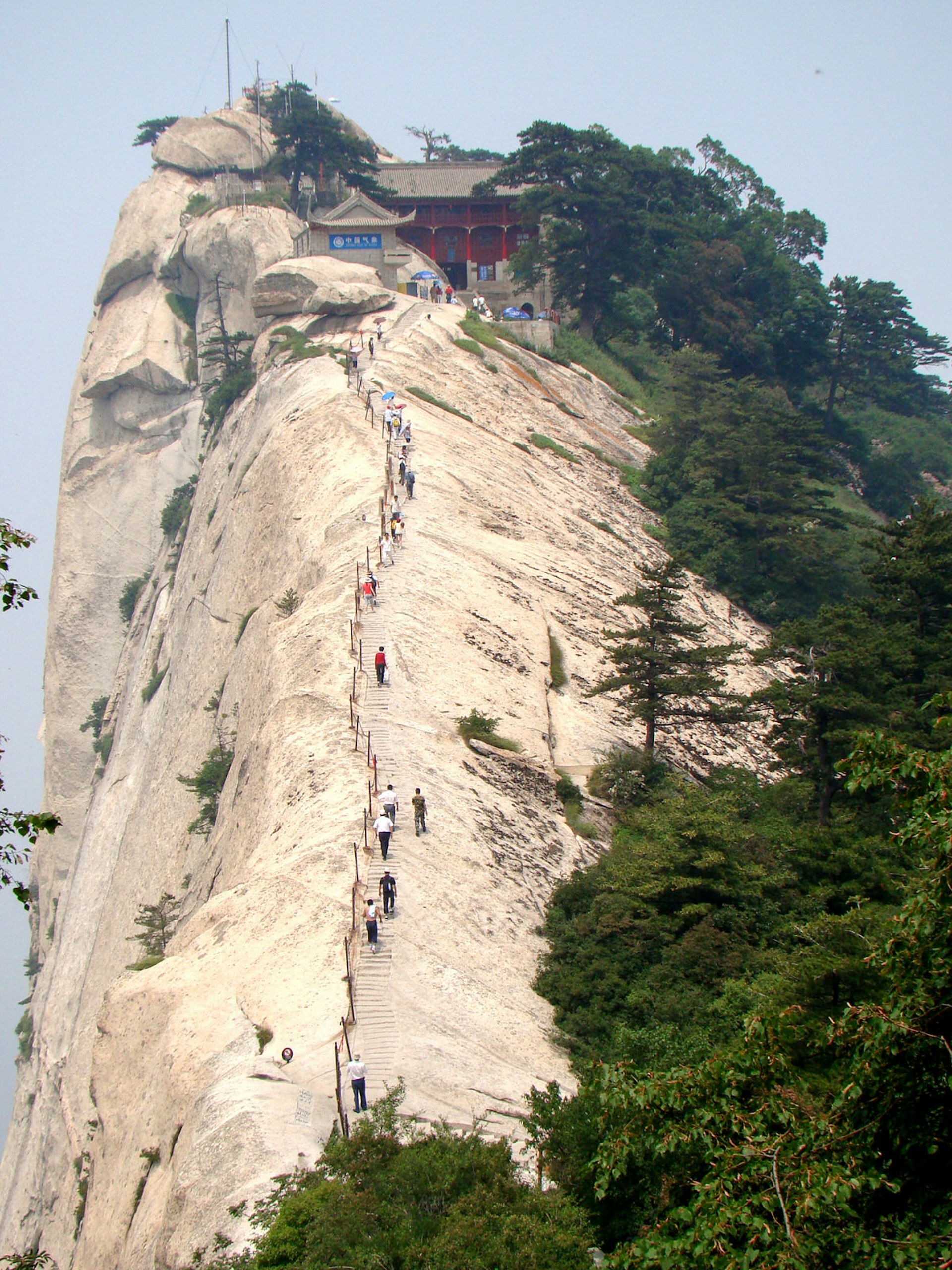
For the too-timid, another nearby via ferrata descends to the Chess Pavilion, a deceptively-prosaic name for what is actually a small pagoda perched on the edge of a cliff. Even if you've forgotten to pack game pieces, there are few better (or more photogenic) corners of Hua Shan to stop for a rest or a picnic.
Life on Hua Shan
Believed to have briefly been home China's most famous ancient Taoist philosopher, Laotzu (author of the Tao Te Ching), Hua Shan is important to China's Taoist community and has a number of small temples. While the majority of modern visitors come for touristic reasons, monastic life still exists on the mountain. The constant flow of porters carrying food and household goods up the stone staircases from the town below provide for the monasteries as well as the touristic services that have been built to cater to lay visitors.
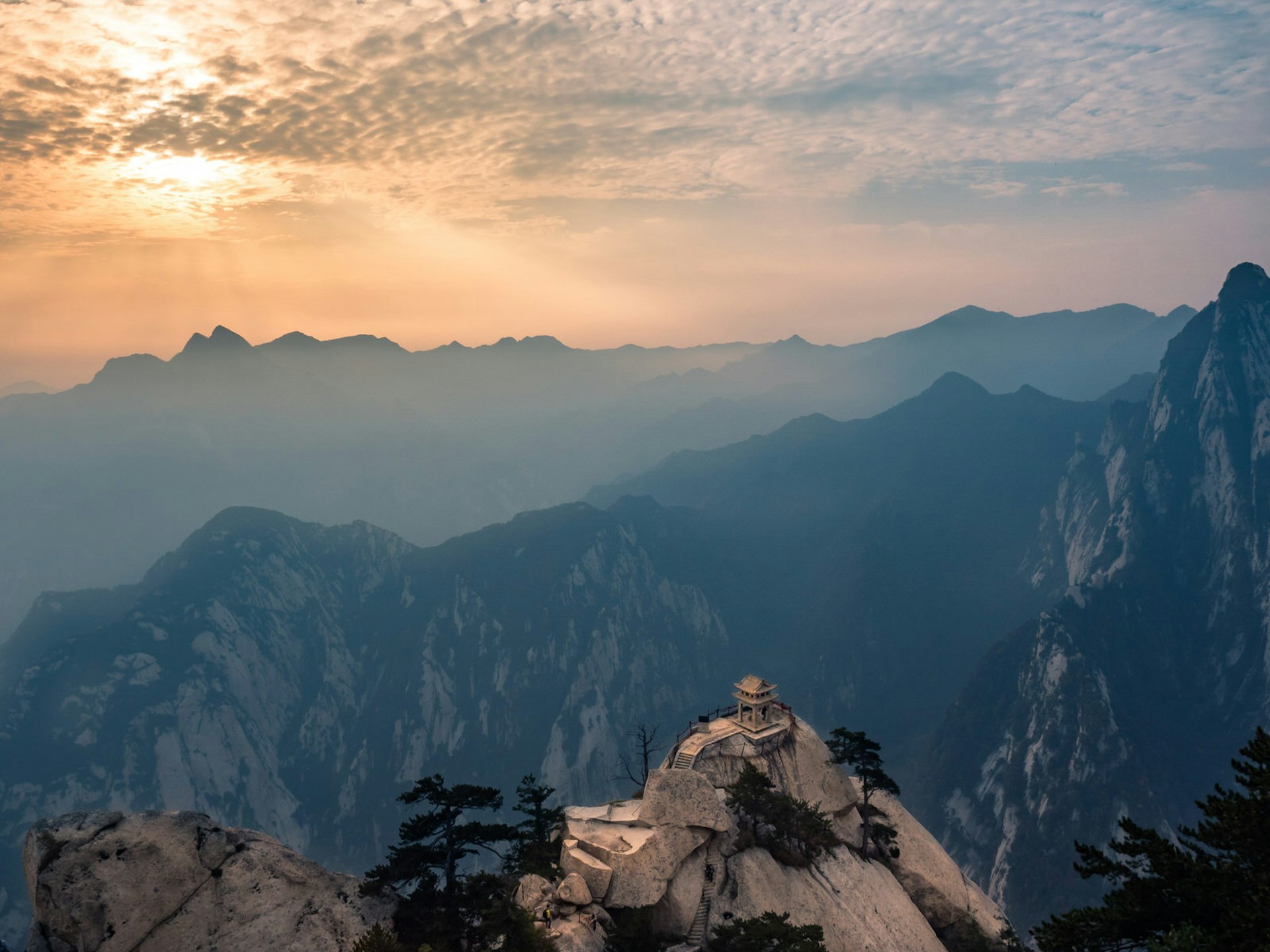
Even the non-religious can stay in the small guesthouses adjacent to several of the temples, though those who prefer a less-ascetic experience can also choose from a number of standard hotels. Regardless of where you stay, plan on either carrying in snacks and water or paying a premium for it on the mountain – all goods are brought up from the valley below, and whether at the central hotel restaurants or small kiosks around Hua Shan, prices are inflated to reflect that.
Make it happen
Buses (two hours, ¥22) and trains (30 minutes to two hours, ¥18-55) depart regularly from Xi'an for Hua Shan station. Trains run until almost midnight, making a day trip from the city possible, but consider staying in one of the basic guesthouses on Hua Shan to extend the experience and see more of the mountain.
